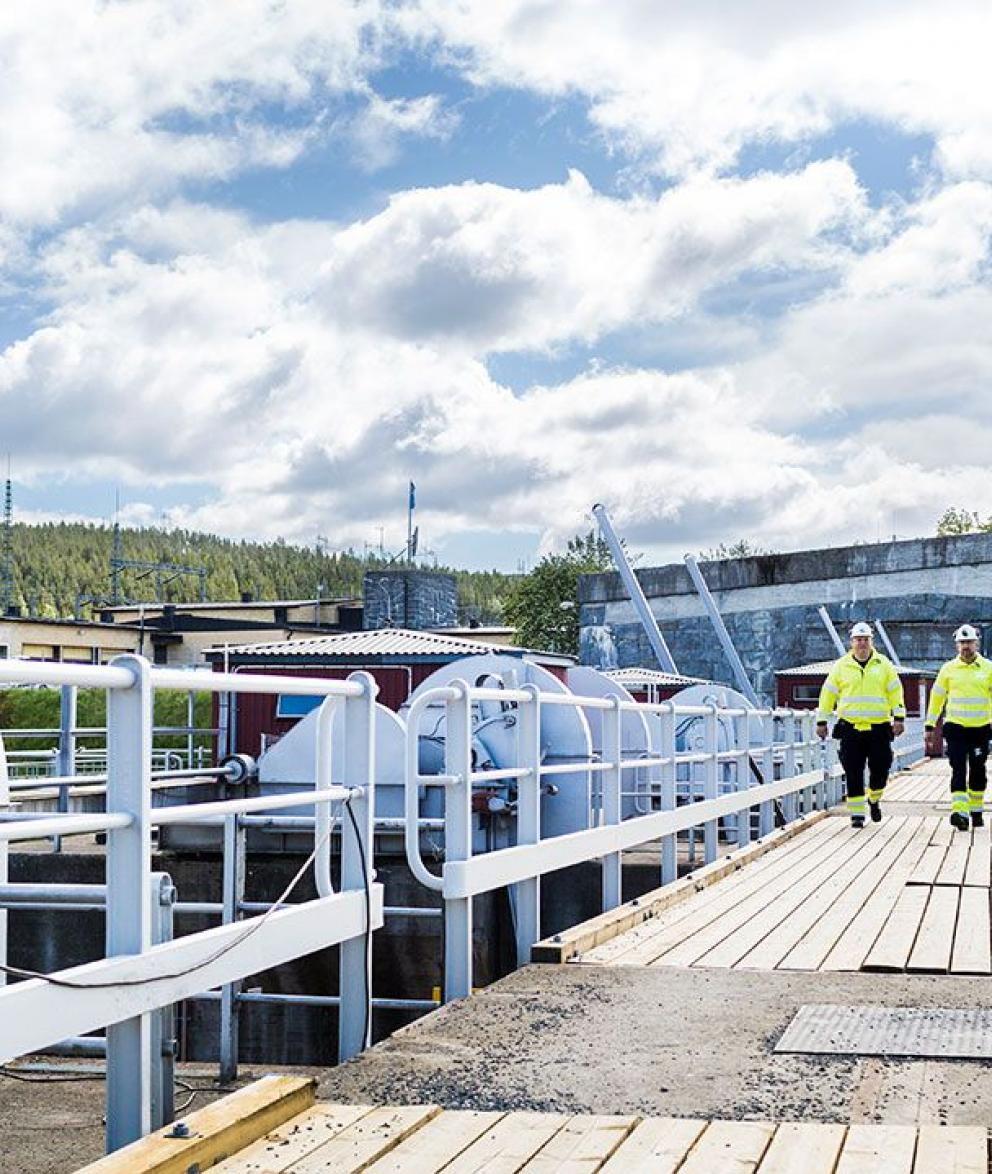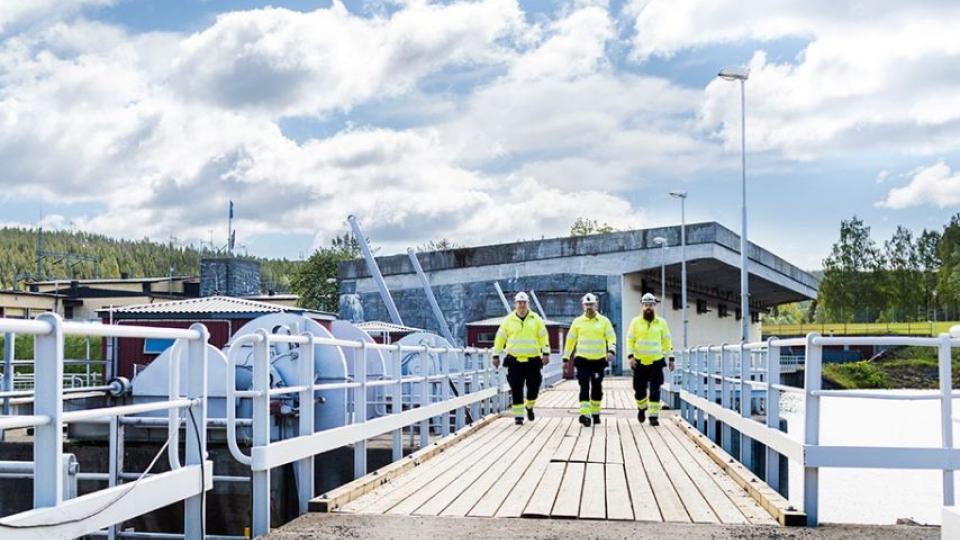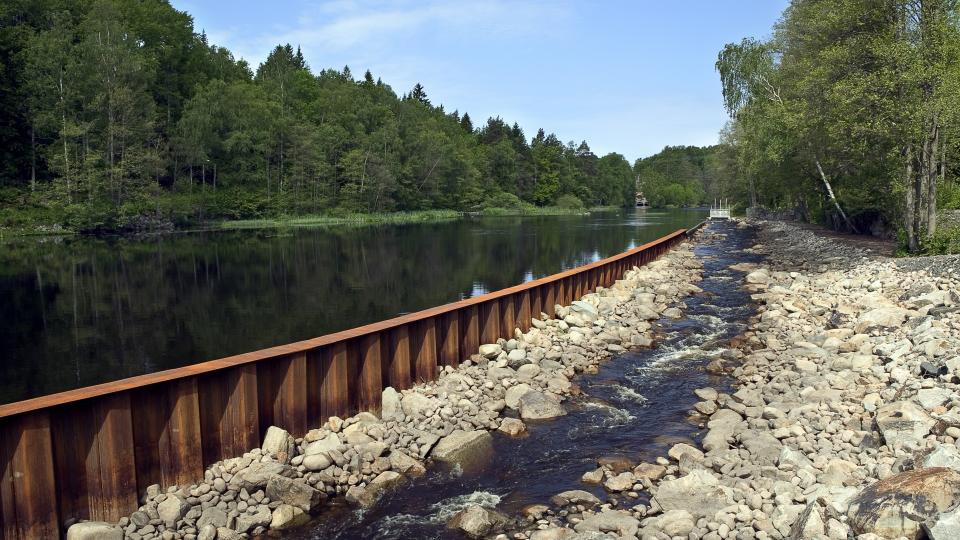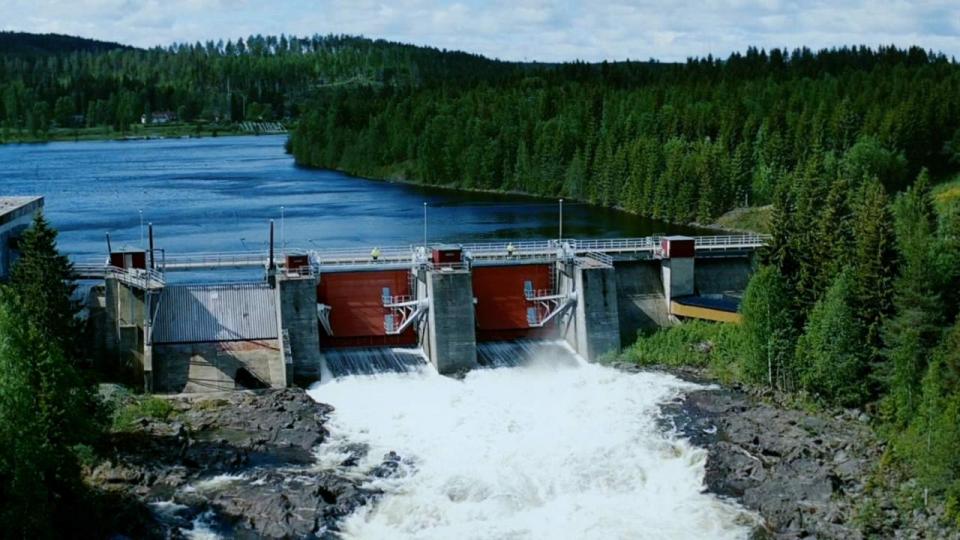Hydropower is a renewable energy source
With its Swedish company, Sydkraft Hydropower AB, Uniper is Sweden’s third largest hydropower producer. Its 74 wholly and jointly owned hydro powerplants located from Lycksele in the North to Kristianstad in the South provide a combined output of approximately 1,700 MW and an annual delivery of about 8,000 GWh of renewable electricity. Corresponding to about 12% of Sweden’s total hydropower production.
As the share of weather-dependent electricity generation (such as wind and solar power) in the electricity system increases, the role of hydropower will be even more important in the future, thanks to its unique contribution of renewable baseload power and balancing capacity.
How hydropower works
- The water’s potential energy is harnessed for electricity generation.
- When the water is channeled into the turbine, it falls downward through a headrace or penstock. The water’s weight and momentum cause the turbine and generator to rotate. Potential energy is converted into kinetic energy.
- The kinetic energy is converted into electricity by the generator.
- The tailrace leads the water back to the river.
- The power is transferred from the generator to a transformer, where it is converted to a high voltage current before being distributed to customers via major power lines, incurring some minor transmission losses.
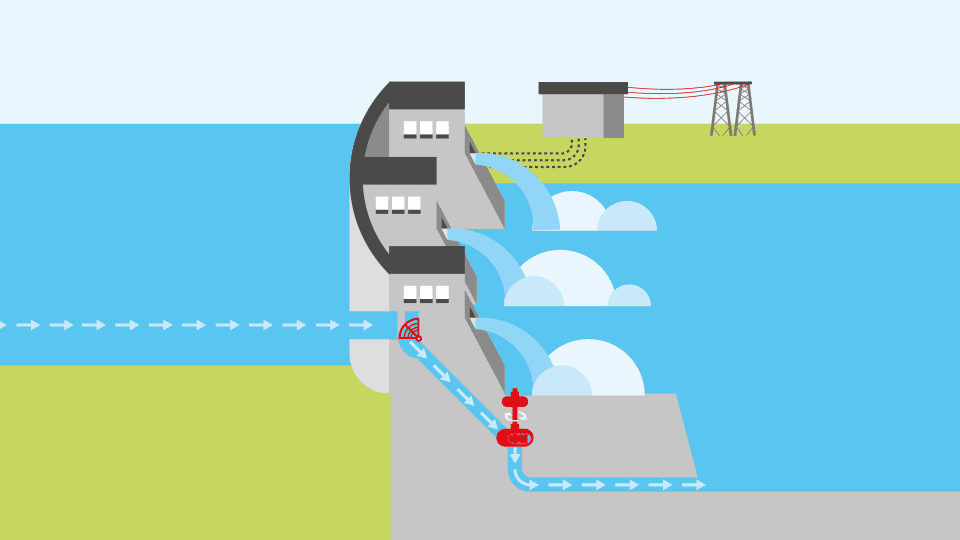
Hydropower electricity generation
The volume of water in the rivers and landscape’s differences in elevation create the preconditions for hydropower plants. Watercourses that are most suited to power production either have a high head or large water flow. The amount of energy that can be generated from a hydro powerplant is directly related to the head and water volume. It is thus easy to understand why the greatest share of hydropower is produced in Northern Sweden’s rivers. Hydropower production usually entails the regulation of river flows. The water that is required for electricity generation is stored in reservoirs and can be used in the exact volume required at any given time.
Significance of spring floods to hydropower
The temperature determines when spring floods will occur. The floods usually occur sometime in April, when the spring weather first gets milder. The reservoirs are then refilled, after having lower levels during the winter months, when the water was bound by snow.
Join Uniper as it measures snow depths in the Scandes mountain range
Critical factors include levels of precipitation in the Scandes mountain range during the year and, naturally, the amount of snow that melts into water in conjunction with the spring floods.
By measuring snow depths in the Scandes mountain range, hydropower companies can forecast the inflows into reservoirs when spring flooding is underway.
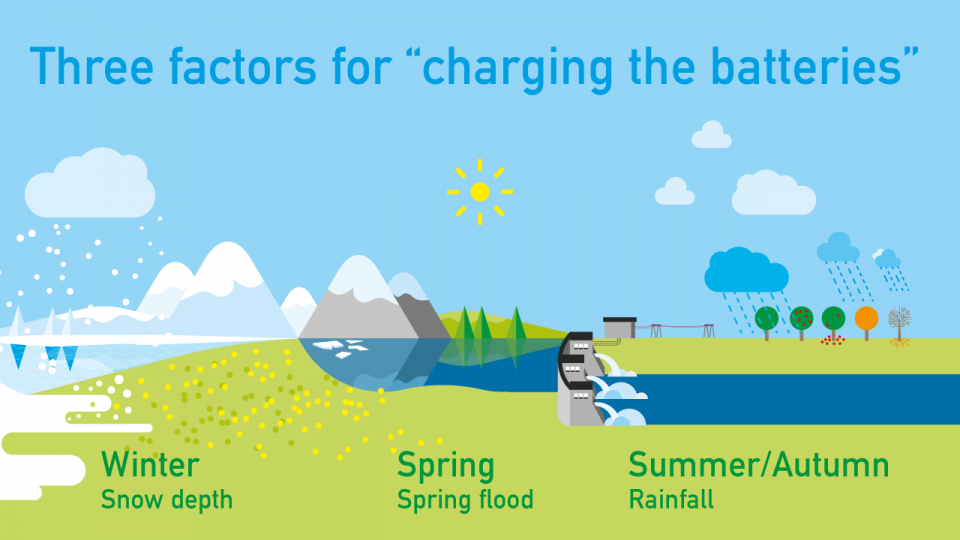
During an annual cycle, the critical factors for hydropower can be divided into three areas. Snow depth in the winter, floods in the spring, and summer and autumn precipitation levels in the regions where hydro powerplants are located. This means that water can be stored in reservoirs during periods of high inflow (for example, during the spring flood). The reservoirs with the largest volumes are located upstream of the hydropower producing rivers. The large year-round reservoirs enable us to utilize about half of the hydropower produced in Sweden. Instead of being wasted when inflows are very high during spring floods and periods of heavy precipitation, production is saved for a later time, when the demand for electricity rises.
Balancing power for a balanced electricity system
The distinguishing features of hydropower are that it is renewable and easy to regulate. This means that it can quickly adapt production as demand fluctuates. These fluctuations may pertain to slower changes that are impacted by, for example, the season and economic cycles. They may also pertain to rapid changes that are linked to society’s activities at different times of the day. The balancing capacity of hydropower is a prerequisite to, for example, solar and wind power, which must be compensated for when the weather is unfavorable.
Nature’s own eco cycle
Heat from the sun causes water from the ground, lakes, rivers and seas to evaporate and rise. As the air cools at higher altitudes, the evaporated water condenses to form clouds that then lead to precipitation in the form of rain or snow. Most evaporation occurs in southern Sweden, while the most precipitation occurs in the Scandes mountain range, in the form of snow. The snow melts during spring and drains into the watercourses, and some of this water is collected in the reservoirs to be used for generating power, primarily during the subsequent winter period. The entire process is repeated year after year with some variation in precipitation levels – referred to as dry years, normal years and wet years.
History of hydropower
Harnessing the potential energy of flowing water to generate electricity is an old and proven technique that stretches a long way back in time. As early as in times of antiquity, water wheels were used to perform mechanical tasks.
The first hydropower facility had already been built in Sweden by the 12th century. The 13th century Land Code in Äldre Västgötalagen (old Westrogothic law) comprises a section with the heading, “Huru miulna skal gaerea” (How mills shall be built).
However, it was not until the 19th century that hydropower began to be used for large-scale electricity generation, which essentially jump-started Sweden’s industrialization.
In the early 1900s, the first hydropower association was formed and, shortly thereafter, the Swedish Parliament passed a series of resolutions that enabled further expansion and collaboration. It was only in the 1940s that major river developments gained momentum, with major projects by the rivers: Indalsälven, Ångermanälven and Faxälven. The foundations where thereby laid for the Swedish welfare state.
Dam safety – leaving nothing to chance
We own and are responsible for approximately 100 hydropower dams in Sweden. Our entire operations are based on a well-functioning dam-safety system. We are responsible for the consequences of a dam collapse and therefore invest significant resources in the maintenance and inspection of our dams. We utilize systems that monitor water surfaces, temperature and movement, as well as inspections by trained personnel who perform everything from weekly rounds to FDUs (Eng: In-depth Dam Safety Assessments). This is the most qualified step in our dam safety work, when supervisory authorities and external experts participate in thorough analysis of dam safety.
The energy industry has jointly developed a compendium of rules and guidelines for dam safety work known as RIDAS (Eng: Swedish Dam Safety Guidelines) together with associated guidelines. Svenska kraftnät and the county administrative boards are the supervisory authorities that ensure that dam safety is managed correctly. A crucial aspect of the dam safety work is based on ensuring our capacity to manage the water, even at really high flows. In concrete terms, this entails that we, for example, build extra spillways in our dams or rebuild those that already exist, in order to cope with major water flows.
Reservoir levels impact prices
The water added by the melting spring snow and from annual precipitation can be stored in large reservoirs along the rivers. This allows the water to be saved for electricity generation during periods of the year when electricity is in highest demand. The dispatchability of hydropower is highly beneficial to the Swedish electricity system.
Consequently, it is important to monitor reservoir levels, which is done continuously via the website of the Nordic electricity exchange, Nord Pool. Access to water is one of many factors that impact both short- and long-term electricity prices. Well-filled reservoirs usually entail a lower average electricity price, while dry years with little precipitation can cause electricity prices to be higher than in normal years.
Find out more
Hydropower has many advantages. It has near-zero emissions of greenhouse gases, while providing a reliable electricity supply at a competitive price. Hydropower is renewable, because the water that is utilized by the powerplant is not consumed, but constantly returned in the form of precipitation.
All electricity and energy production impacts the environment. When it comes to hydropower, powerplants and dams involve an encroachment on the environment that changes the conditions of life in and adjacent to watercourses.
We are seeing rising demand for electricity as society develops and new innovations see the light of day. Consequently, balancing power becomes increasingly important, the more solar and wind power we utilize in the electricity system.
